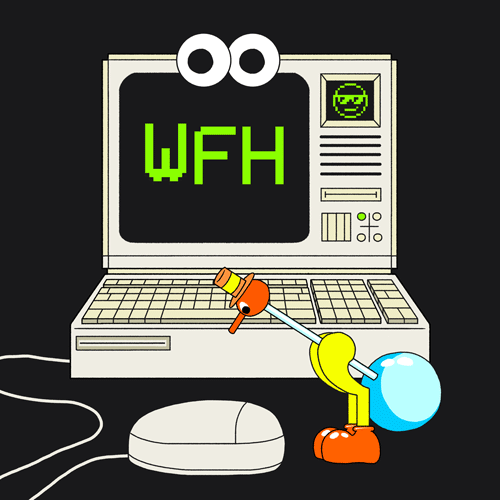COVID-19 has radically changed recruitment in humanitarian agencies… or has it? The advent of the COVID-19 virus has led to dramatic changes in the way humanitarian staff work, with most staff having to work from home and the downscaling of fieldwork.
With regards to the HR function, recruitment has had to be conducted remotely with the use of telecommunications technology such as ZOOM, WEBEX and Teams.

It does not seem, however, like there has been a sweeping freeze in recruitment as one would have expected – a quick search on the UN JOBS website on the 26th of May 2020 shows 1,806 open positions being advertised and from informal discussions, with HR colleagues only one organization seems to have implemented a complete freeze on recruitment.
In addition, OXFAM recently announced a major restructuring resulting in their withdrawal from 18 offices globally and the laying off 1,450 staff in part, due to the “financial impact of the coronavirus pandemic”. Apart from this, it would appear most humanitarian organizations are still recruiting, albeit remotely. Of course, this may change as the impact of COVID-19 continues.

An argument could be made that the move to remote recruitment may disenfranchise potential candidates who may not have access to reliable internet connectivity, but this is a topic for another blog.
Recruitment in most humanitarian agencies typically follows the following cycle: –
- Needs definition and identification
- Sourcing (e.g. advertising)
- Screening (level 1 screening typically done automatically by an Applicant Tracking System – ATS)
- Shortlisting of candidates
- Selection broken down into
- written assessment
- Interview
- Hiring – Offer
- Onboarding
Each of these stages can and have in the past, been done with very little physical interaction with candidates. For over a decade, humanitarian organisations have been using tools such as Skype to conduct interviews.

As an example, in 2011 I was recruiting international staff for an international NGO in Haiti; the entire recruitment process (including on-boarding) for international staff was conducted remotely. We only got to physically meet the new staff member when they reported for their first day of work!
Furthermore, organisations increasingly are looking at potential candidates’ online profile, scouring the internet for publicly available information on platforms such as Facebook and LinkedIn. Be sure to read my upcoming blog on social media review and branding to learn how to maximise on your online presence.
As broadband and mobile connectivity have become ubiquitous, there has been an exponential increase in the use of technology in the recruitment process including the conducting of “person less” video interviews – where candidates log in to a website and have to record themselves responding to a number of questions.

The responses are reviewed at a later stage by a panel who in most cases are sitting in remote locations. An example of this automated video interviewing solution is SONRU. I personally know of a number of people who were recruited in this manner.
From the foregoing, it is somewhat surprising that there has been incessant chatter about how COVID-19 has had a profound impact on how humanitarian agencies conduct their recruitment. Based on my research and experience, it appears that most humanitarian organisations have been to a large extent performing remote recruitment, perhaps not at the same level as pre-COVID, but pretty close to it.
In my view, the aspects of the recruitment process adversely affected include physically reporting for work at the designated work location. Due to COVID-19 induced lockdowns and travel restrictions, some humanitarian organisations have resorted to having new hires working from their “home location” or in some cases from the locations where they found themselves “locked down” in at the time of hiring.

Another recruitment activity that has been impacted by COVID-19, is the requirement for medicals prior to starting employment. Access to testing facilities combined with a desire on the part of the candidate to minimize exposure makes it extremely difficult to facilitate pre-employment medicals. From a recruitment perspective, the pandemic has brought into sharp focus the importance of utilization of appropriate technological tools in the recruitment process, but it has not changed the process itself.
The pandemic has, however, impacted other HR processes especially those that fall within the employer-employee relationship, such as leave policy. An intriguing issue right now is the mandatory quarantine period being enforced by most countries and its implications on leave especially if a member of staff travels.

Questions related to whether the time spent in quarantine constitutes part of the leave or whether the organisation is liable for payment of quarantine facility bills should their employee is placed under mandatory quarantine have no easy answers. I will tackle these and other questions related to working from home and flexible working arrangements in an upcoming blog on COVID-19 impact on the broader HR functions.
To conclude, in my view HR recruitment in the humanitarian sector has not radically changed as a result of COVID-19. Career opportunities still exist within the UN agencies and a plethora of NGO’s. It would be good to heed our mantra at HUMHR, “Panic not, but Prepare” during these uncertain times. We can work with you to help ensure that your career marketing documents are excellently written and walk with you on your career journey. Our next blog will discuss the skills needed in a post-COVID-19 world.







